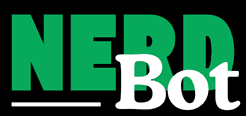In today’s fast-paced, globally connected world, team collaboration is more important than ever. The way teams are formed and function directly impacts the success of any business. Teamwork, synergy, and collective intelligence can make or break an organization. The phrase “Meet the Team Aggregate” reflects a modern approach to assembling diverse talent pools and strategically utilizing their strengths to foster innovation and success. This article dives into the essentials of building and managing a high-performing team, exploring the benefits of aggregate team dynamics, and the tools and methods needed to achieve business objectives.
1. Understanding the Concept of Team Aggregate
The term “team aggregate” refers to bringing together individuals from different backgrounds, skills, and perspectives to work on a common goal. In a traditional team structure, roles and tasks are often siloed. However, in a team aggregate, members’ roles are fluid, encouraging cross-functional collaboration. This model is ideal for modern organizations that prioritize innovation, problem-solving, and dynamic adaptability.
The team aggregate approach acknowledges that no single individual holds all the answers. Instead, it focuses on the power of diverse perspectives and collective decision-making. When each team member brings their unique strengths and insights to the table, the combined intelligence of the group becomes the driving force behind creative solutions and impactful results.
2. Building a Strong Team Aggregate
When building a team aggregate, leaders need to focus on more than just hiring skilled professionals. They should carefully assess candidates’ abilities to work within a diverse, collaborative environment. Here are the key steps to building a solid team aggregate:
- Define Clear Objectives: Before assembling the team, it’s important to define what success looks like. This clarity ensures that each member understands their purpose within the aggregate. Clear objectives also create alignment and provide a north star for everyone to work toward.
- Diversity of Skills: A successful team aggregate is not just about having a set of skilled individuals; it’s about having a mix of skills that complement each other. Hiring professionals with varied backgrounds, technical expertise, and perspectives allows for creative solutions to complex problems.
- Fostering Inclusivity: It’s essential to foster an inclusive environment where all members feel comfortable sharing their ideas and opinions. Team aggregates thrive when every individual feels valued, heard, and respected.
- Strategic Leadership: Effective leadership is key to guiding the team aggregate. Leaders should create a culture of trust, collaboration, and transparency. They must encourage open communication, ensure accountability, and guide the group through challenges and obstacles.
3. Collaboration in a Team Aggregate
Collaboration lies at the heart of an effective team aggregate. It is crucial to create a culture where individuals work together toward common goals. The following strategies enhance collaboration within a team aggregate:
- Open Communication Channels: Team aggregates work best when communication is seamless and transparent. Encourage team members to communicate openly and share updates regularly. Tools like Slack, Microsoft Teams, or Trello can be helpful in maintaining smooth communication.
- Clear Roles and Responsibilities: While team members in an aggregate team might wear multiple hats, there should be clarity on who is responsible for what. Having clear roles and knowing each other’s strengths fosters more efficient collaboration.
- Shared Decision-Making: Empower the team aggregate by promoting shared decision-making. When team members are involved in key decisions, it boosts ownership, accountability, and motivation. This also reduces bottlenecks and increases the speed of project execution.
- Collaborative Tools and Technologies: Leveraging collaborative technologies such as Google Drive, Zoom, or Asana enables team members to work together seamlessly, whether they’re in the same room or scattered across different locations. These tools promote real-time collaboration, file sharing, and project tracking.
4. Challenges in Team Aggregates
Despite the many benefits of a team aggregate, there are challenges that leaders and members must address for continued success:
- Miscommunication: With members working across different roles and time zones, there’s always the risk of miscommunication. Establishing clear protocols and documentation can help avoid confusion and misunderstandings.
- Conflict Resolution: In any team, conflicts can arise. In an aggregate, where collaboration and shared decision-making are crucial, it’s important to have strategies in place to resolve conflicts quickly and amicably.
- Balancing Individual Goals with Team Objectives: While it’s vital to encourage individuals to pursue their own professional development, this should not conflict with the overarching goals of the team. Leaders must ensure alignment between personal goals and collective objectives.
- Maintaining Accountability: With roles and responsibilities being somewhat fluid in an aggregate model, leaders must ensure that accountability is not lost. Regular check-ins, performance metrics, and feedback loops can help maintain accountability and ensure that all team members contribute meaningfully.
5. Technology’s Role in Modern Team Aggregates
The rise of remote work, distributed teams, and technology has revolutionized how team aggregates function. Technology plays an integral role in facilitating communication, collaboration, and innovation:
- Cloud-Based Solutions: Platforms like Google Workspace, Dropbox, and other cloud-based solutions enable teams to work on projects simultaneously from any location.
- Project Management Tools: Applications such as Monday.com, Basecamp, or Jira help in task management, keeping the team on track with deadlines, assignments, and project milestones.
- Video Conferencing Tools: With remote teams becoming more common, video conferencing tools like Zoom or Microsoft Teams are critical for real-time communication and brainstorming sessions.
- Artificial Intelligence and Automation: AI tools are beginning to assist team aggregates by automating repetitive tasks, analyzing data patterns, and providing insights. This allows team members to focus more on strategic decision-making.
6. The Impact of Team Aggregates on Business Performance
The effectiveness of team aggregates directly correlates with improved business performance. When organizations adopt a team aggregate model, they can expect the following benefits:
- Increased Innovation: Diverse perspectives lead to innovative ideas and solutions. When individuals from different disciplines collaborate, they challenge conventional thinking and push boundaries.
- Faster Problem Solving: The collective intelligence of the team leads to quicker problem-solving. With each member contributing their unique insights, complex problems are dissected and addressed from multiple angles.
- Enhanced Employee Engagement: Team members in an aggregate environment often feel more valued and engaged, as their contributions directly impact the success of the organization. This increased engagement leads to higher morale and productivity.
- Adaptability and Agility: With roles being more fluid, team aggregates are highly adaptable. They can pivot quickly in response to market changes, customer needs, or internal challenges.
7. The Future of Team Aggregates
As the workforce becomes increasingly global and remote, the team aggregate model will continue to evolve. Some trends that will shape the future of team aggregates include:
- Greater Emphasis on Flexibility: Teams will increasingly prioritize flexibility in work schedules and environments. The ability to work asynchronously across time zones will become standard practice.
- Increased Reliance on AI: As AI and machine learning technologies advance, they will play an even greater role in automating routine tasks, leaving team members to focus on more strategic initiatives.
- Cross-Disciplinary Teams: The future will see an increase in cross-disciplinary team aggregates, bringing together professionals from areas like engineering, marketing, design, and data science to solve multifaceted business challenges.
- Holistic Leadership Approaches: Leaders will need to adopt more holistic approaches, focusing on emotional intelligence, inclusivity, and fostering creativity within their teams.
Conclusion
In conclusion, team aggregates are a powerful way to bring together the best minds and achieve outstanding business results. By building diverse teams, promoting collaboration, and utilizing technology, organizations can unlock their full potential. Leaders who embrace the team aggregate model will find themselves better equipped to navigate the complexities of the modern business world, driving innovation, adaptability, and success.


